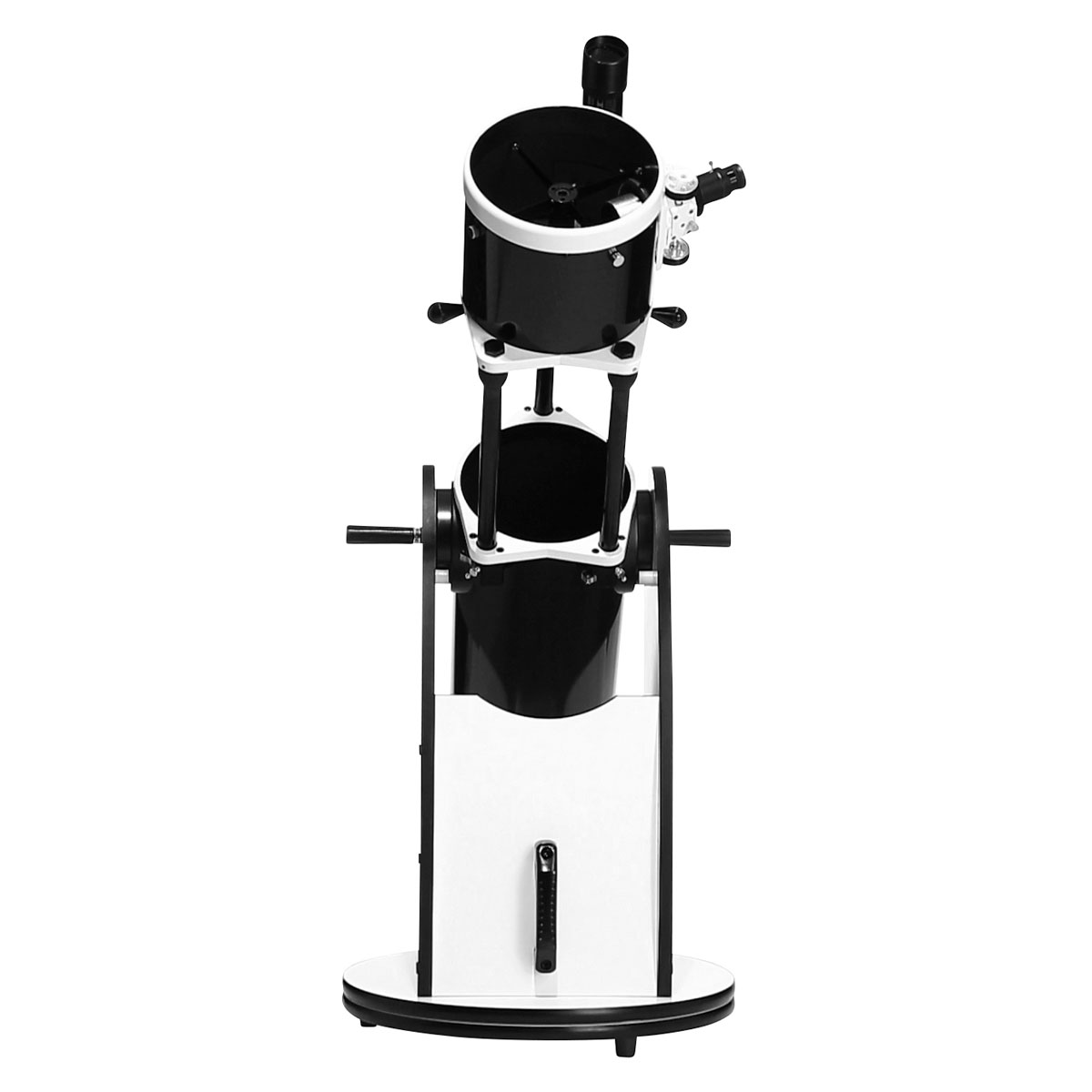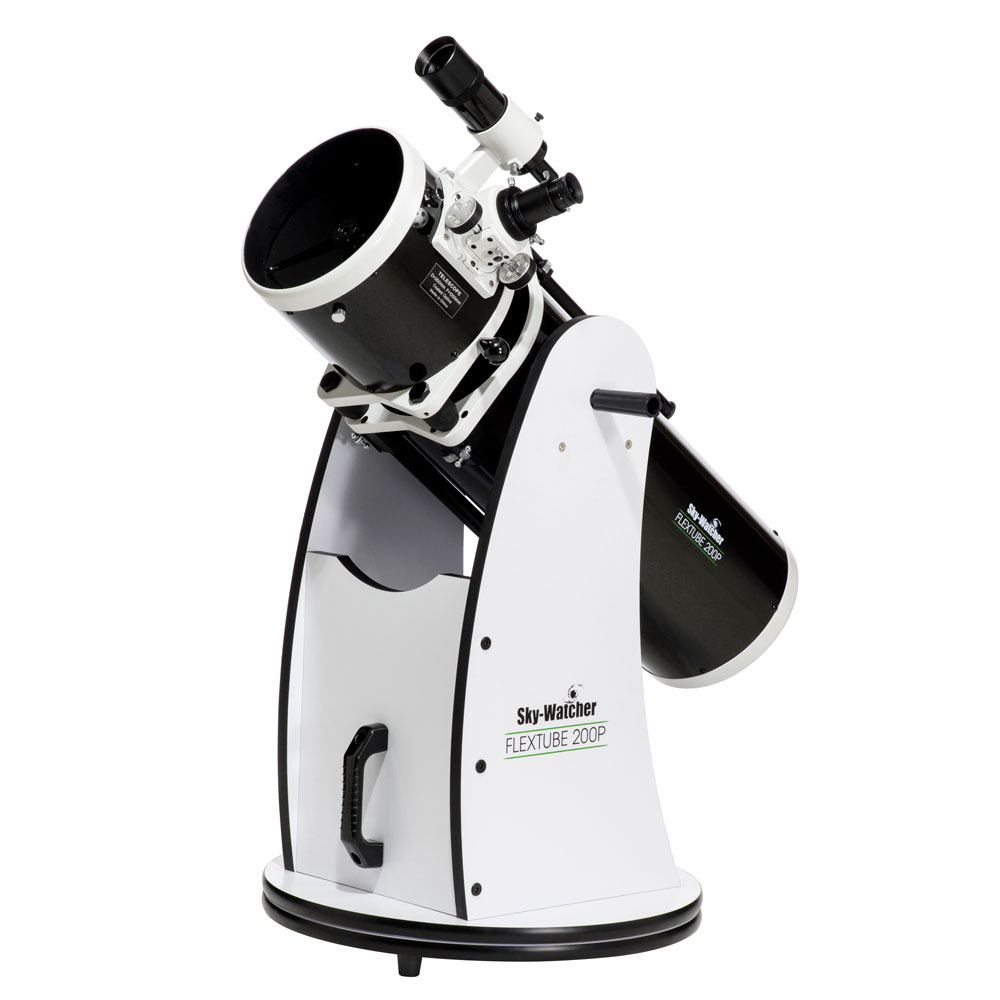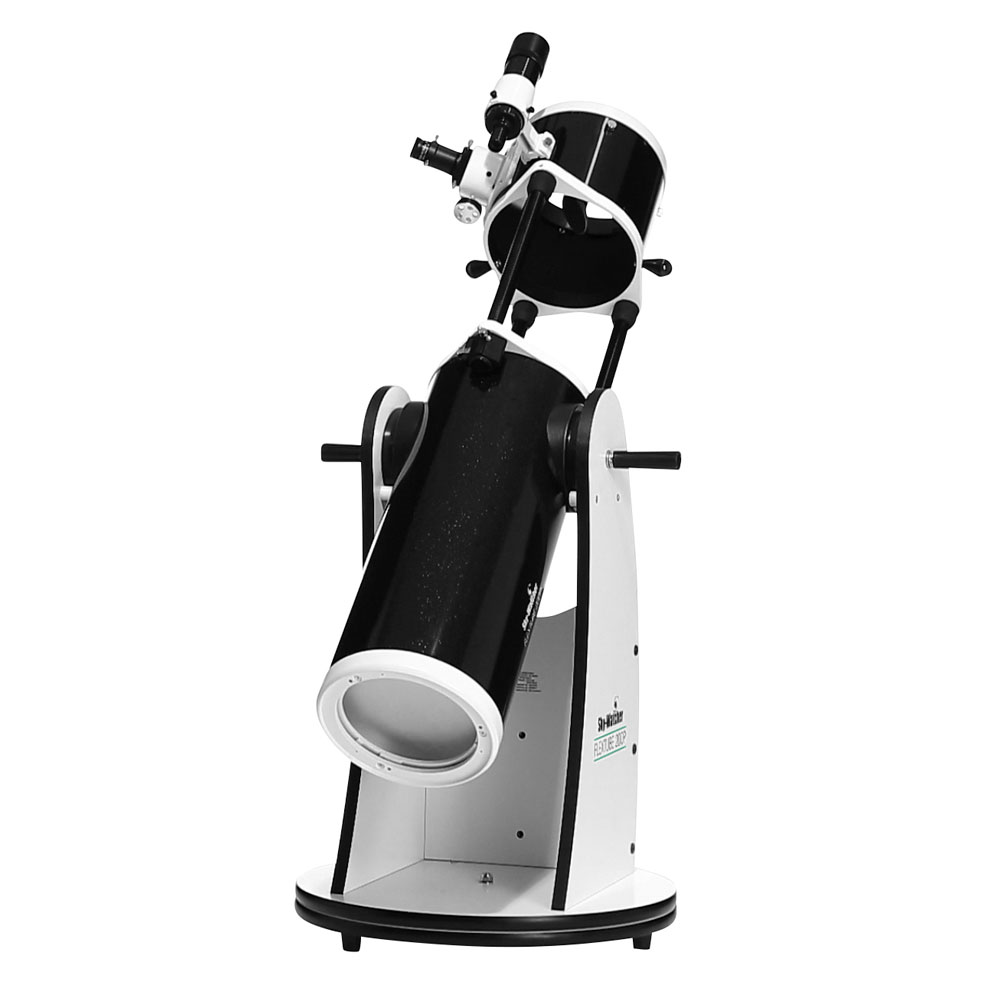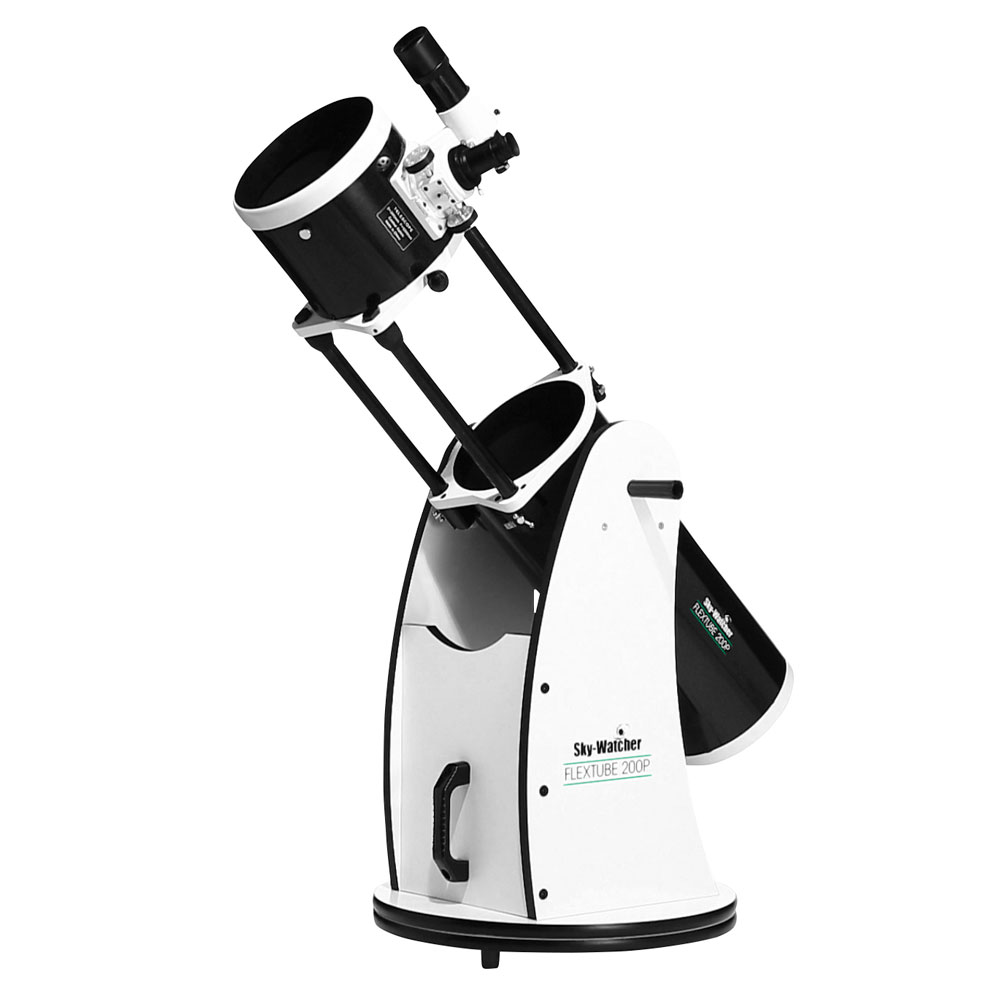
Flextube 250P Collapsible Dobsonian Features
- Collapsible Dobsonian with 3-Points Tube Locking System
- No Disassembling or Collimation is required between uses
- Dobson Wooden Mount with Tension Control System and Accessories Tray
- Diffraction Limited Parabolic Mirror
- Ultra Thin Secondary Mirror Support (only 0.80mm)
- Backed by 5 Years Sky-Watcher Limited Warranty
5 year manufacturer warranty (not transferable).
Flextube 250P Collapsible Dobsonian Description
Sky-Watcher Flextube 250P Collapsible Dobsonian Telescope
The Ultimate Light Gatherer
The Dobsonian telescopes are named after John Dobson, an amateur astronomer who designed a very simple but effective telescope, where the key factor is a large aperture for little money. His idea was to mount a Newton telescope on an easy-to-use alt-azimuth mount that does not need time-consuming alignments. Sky-Watcher improved the Dobson design building a collapsible system that allows the telescope to be easily stored or transported. The 3 metal bars, used to fully extend the tube, have an auto-lock spring loaded system that simplify the set up of the telescope so only one person is required to fully extend the tube. The rigidity of the telescope keeps the mirrors collimated and the tension control system keeps the telescope balanced, so it is not necessary to move heavy counterweights.
Just extend the tube, use the finderscope and point the telescope towards your favourite night sky objects – sit back and enjoy the great light gathering of the Sky-Watcher Dobsonian!
To top it off, the Sky-Watcher Collapsible Dobsonians are equipped with a 2″ Crayford focuser and focuser locking screw.
Accessories in the Box:
- Finderscope 9X50 straight version
- Eyepiece 1.25″ Super Plossl 25mm (48x) – apparent filed of view 52°
- Eyepiece 1.25″ Super Plossl 10mm (120x) – apparent filed of view 52°
- Eyepiece adapter from 2″ to 1.25″ with M42 thread
- 2″ tube extension
- User Manual
Optical Design
Newtonian (parabolic primary mirror)
The optical design of a telescope is a feature that defines what sort of observing the telescope is suitable for.
Optical Diameter
254mm (10")
The aperture (diameter) of a telescope’s main lens or mirror. This describes how much light a telescope can grasp.
Focal Length
1200mm
The distance that the light has to travel between the aperture and the focal point. A smaller focal lengths will deliver a wider field of view.
F/Ratio
f/4.7
The relationship between the focal length and the aperture, larger f/numbers imply higher magnification.
Secondary Mirror Diameter
58mm
Bounces the light back to the primary mirror and through a hole in its center.
Obstruction
22.8%
The secondary mirror in optical systems creates a shadow, which reduces the contrast and effective aperture performance.
Resolving Power
0.47"
The ability to clearly distinguish between two points whose separation is less than the smallest angle that your eye can resolve.
Stellar Limit Magnitude
15.1
The magnitude of the faintest object visible under zero light pollution conditions.
Highest Practical Power
508X
Exceeding the Highest Practical Power will result in a fuzzy image.
Light Gathering Power
1317X
How much brighter things will appear than what the human eye can see.
Focuser
2" Crayford with 1.25" adaptor
Wider focusers allow for a wider field of view.
Tube Length
805mm-1120mm
The length of the tube without base or mount.
Height
1390
Height of the telescope at full extension.
Tube Weight
14kg
You may need a counterweight to prevent your telescope from rotating downwards due to gravity.




